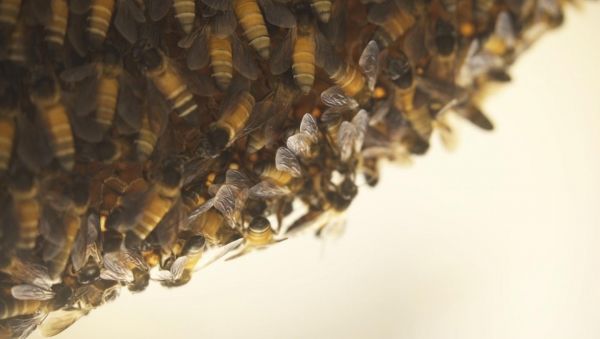Our air is the one thing that surrounds all of us. According to the World Health Organization (WHO), 9 of the world’s 10 most polluted cities are now in India. Yet, we have almost no idea how air pollution is affecting other organisms who breathe the same air as we do. In some of the first research in the world to try to address the physiological and molecular impacts of air pollution on our wild plants and animals, scientists from the Bangalore Life Science Cluster show that air pollution could be devastating for organisms we rely on most for our own survival – like the honey bee.
For several years, members of Shannon Olsson’s lab at the National Centre for Biological Sciences (NCBS) in Bangalore had observed fewer pollinators in urban centres of the city. Was it pesticide use that caused this? Lack of water or shade? Determined to find out, Geetha G Thimmegowda traveled to different locations of this megacity to observe and collect the Giant Asian honey bee.
Watch highlights from the study here.
Apis dorsata, or the Giant Asian Honey Bee, is not only a common resident of Indian cities, but it is an important contributor to India’s food security and ecosystems. This bee produces over 80% of the country’s honey, and pollinates over 687 plants in Karnataka alone. 75% of our crop species rely to some extent on animals, and mostly insects, for their production. India is the largest fruit and second largest vegetable producer in the world. Without insect pollinators like our honey bees, the yearly mango export would lose over Rs. 65,000 Lacs. The importance of bees and other pollinators to India’s plant biodiversity and agroeconomy cannot be overstated.
Read more at National Centre for Biological Sciences
Image: Giant Asian Honey bee (Apis dorsata) colonies in Bengaluru, India. (Credit: Elephant Corridor Films (www.elephantcorridorfilms.com))


